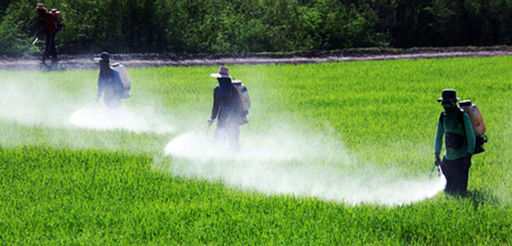14.6.1 Stockholm Convention on Persistent Organic Pollutants
Persistent organic pollutants (POPs) are chemicals produced by industrial processes, mostly for use as pesticides (Figure 14.5). You may recall from Study Session 8 that POPs are characterised by high toxicity and persistence (lasting for years or even decades before degrading into less dangerous forms). They are also highly mobile in the environment because they may evaporate or dissolve and travel long distances through air or water. They also bioaccumulate in fatty tissues and biomagnify in the food chain. The Stockholm Convention was adopted in 2001 to restrict the production of POPs, eliminating the most dangerous, and to clean up stockpiles and equipment containing POPs. Many POPs contain chlorine in their composition. Examples are aldrin, chlordane, DDT, heptachlor, and hexachlorobenzene. Many of these pesticides are now banned.

What is the difference between bioaccumulation and biomagnification?
Bioaccumulation is the increase of a pollutant in an individual plant or animal because of continued exposure. Biomagnification is the increase of the pollutant in organisms through a food chain. (You learned about bioaccumulation and biomagnification in Study Session 8.)
14.6 Conventions on chemical pollutants
